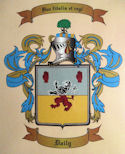 |
(1) I’m just about ready to close up the fuselage. All of the
interior bits are installed or ready to be installed. I intended to use the
True Details seat, but mine arrived with the headrest broken off. I tried gluing it
back on, but there was an ugly seam at the joint and I didn’t see an easy way to
clean it up. I had a bunch of UltraCast seats in the parts box, so I opted to use one
of those plus the Tamiya support.
|
 |
(2) The fuselage halves have been joined. Here’s a slightly
fuzzy view into the cockpit.
|
 |
(3) After what felt like an eternity cleaning up seams and joints, I sprayed a coat of Alclad Gloss
Black Primer on the model. The panel ines on the wings required another application of Mr. Surfacer and then I could
move on to the finish coats. The control surfaces were painted with Alclad Semi-Matte Aluminum and the wings got a coat of
Mr. Color Super Silver.
|
 |
(4) The fuselage received an overall coat of Alclad Aluminum. I masked off some panels and painted them with
Alclad Dark Aluminum followed by a light misting of Aluminum to tone down the contrast. I used Alclad Magnesium around the
exhausts on my previous build and it seems too dark to me now. I think I’ll try a mix of Magnesium and Aluminum
this time.
|
 |
(5) Mary Alyce is ready for decals. I used Mr. Color No. 65 Bright Blue for the striping and
Vallejo 71.007 Olive Green for the anti-glare panel in front of the cockpit. The decal set included black stripes for the
edges of the blue, but not for the nose right behind the spinner, so I used Model Masters flat black for that.
|
 |
(6) The decals are on and this build is entering its final stages.
|
 |
(7) I cut the canopy parts from the sprue using a sprue cutter. No matter how careful I am, there’s
always a white stress spot where the part was attached to the sprue. I sanded those with ever finer grades of sandpaper (ending
with 1200 grit) and then polished the parts with Tamiya polish. The parts were then washed thoroughly and placed into my
miniature “clean room” to dry. After they were dry, they were dipped in Future and put back in the clean room.
|
 |
(8) Almost there. There are a couple of small thingss I want to touch up and I need to finish and install the
Brassin 75 gallon drop tanks, but Mary Alyce is pretty much done.
|
 |
(9) For all intents and purposes, Mary Alyce is done. The prototype aircraft - serial number 44-63451 -
was assigned to the 46th Fighter Squadron, which was based on Iwo Jima.
|
 |
(10) The 46th identified its planes with a blue spinner and stripes, edged in black. I may add some chipping to
the spinner and stripes using a silver Prismacolor pencil, but I want to live with the model a bit before I decide.
|
 |
(11) Pilot Robert J. Louwers nicknamed the aircraft Mary Alyce after his wife. No one knows whether the real Mary Alyce
posed for the painting on the side of the plane. The Mustangs on Iwo Jima escorted bombers to Japan. It was a 3 hour flight from Iwo to
Japan, then combat with Japanese aircraft, followed by a 3 hour flight back to Iwo. That was such a strain on pilots that two were assigned
to each aircraft. Louwers shared Mary Alyce with John E. Montgomery III (The plane, people, not his wife. Get your minds out of the gutter).
|

